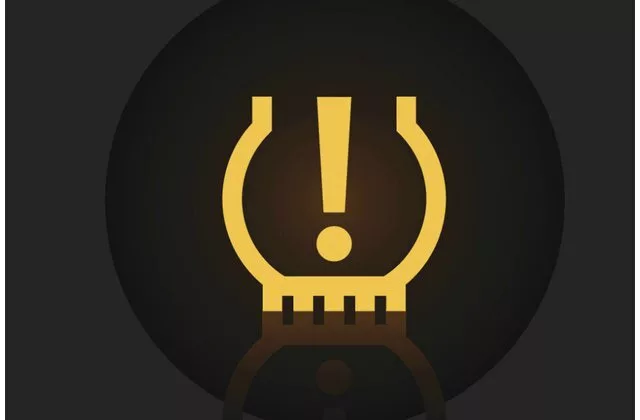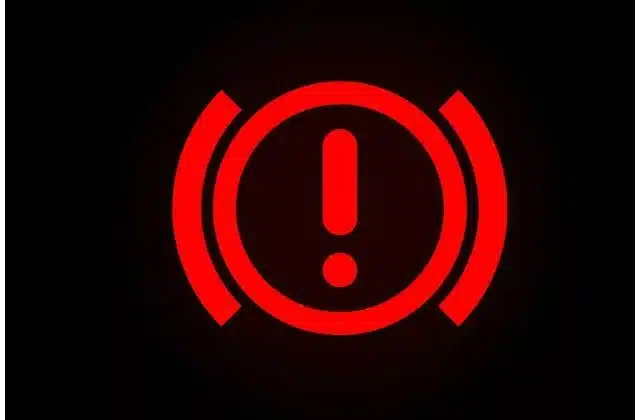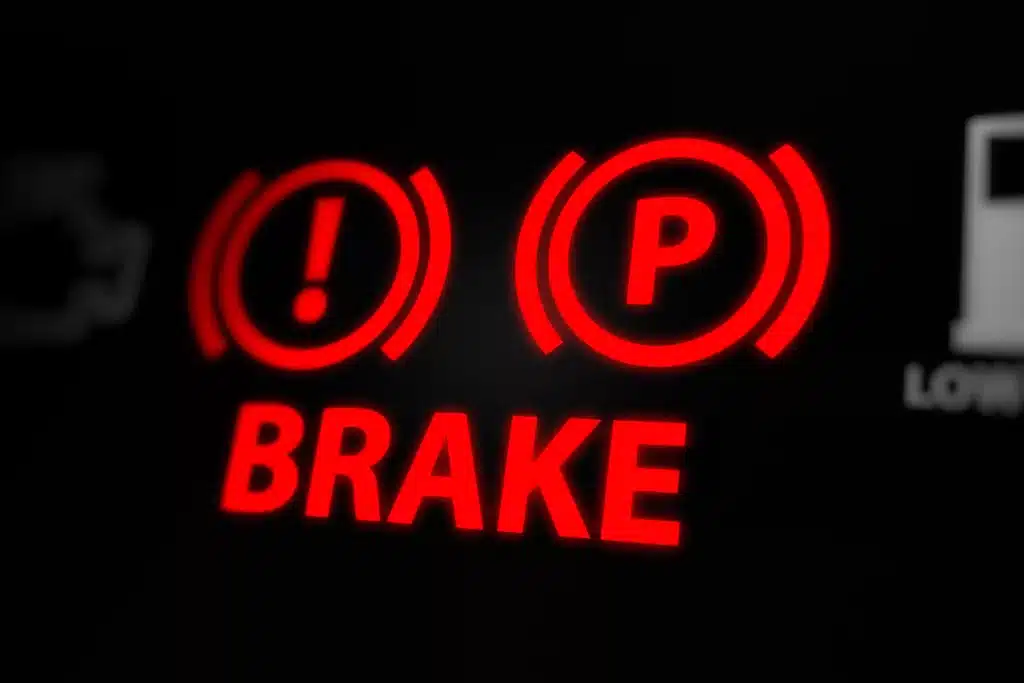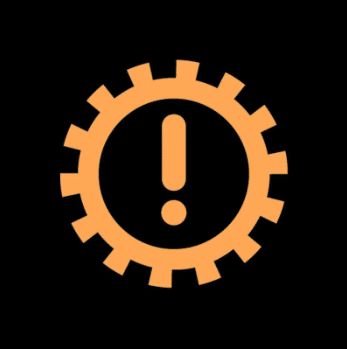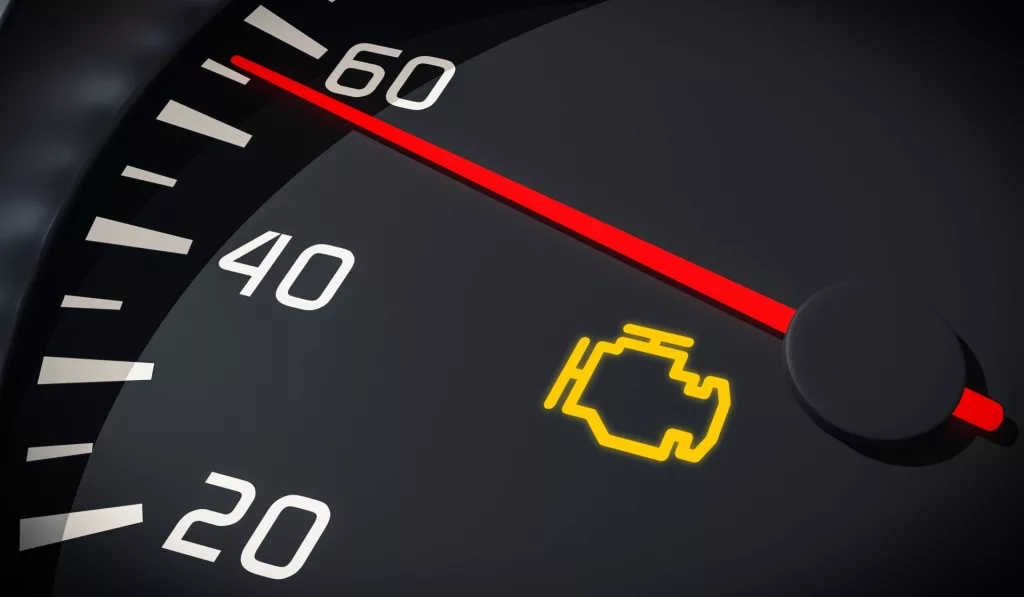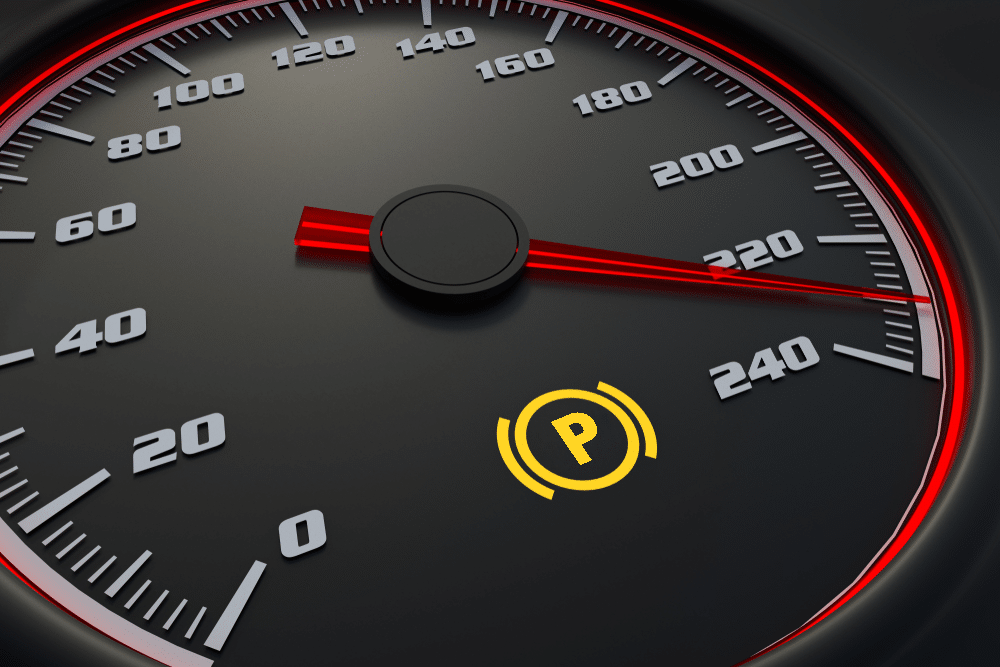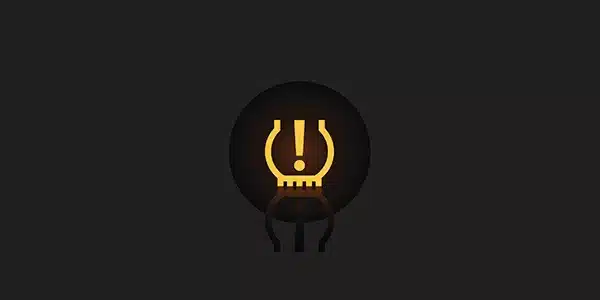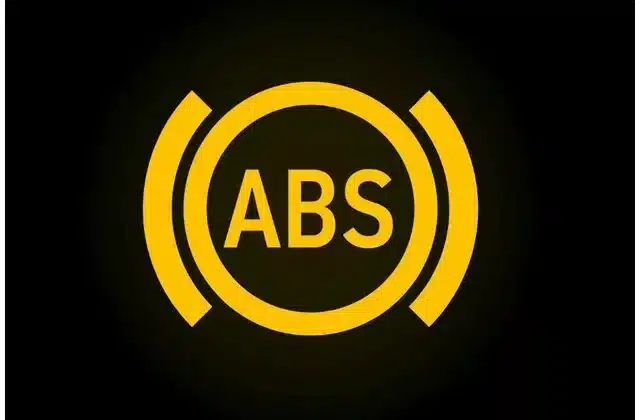Comprehensive Vehicle Dashboard Light Diagnosis
Introduction
The dashboard lights on your vehicle are your first alert to potential issues under the hood or with its systems, serving as crucial indicators of your vehicle’s health and safety. At Limitless Tire, we offer a comprehensive vehicle dashboard light diagnosis service designed to promptly and accurately decode these signals, ensuring your vehicle remains in peak condition. Trust our expert team to provide the insights and solutions you need when your dashboard lights up, keeping you safe and informed on the road.

Understand Your Dashboard
Parking Assist and Sensor Indicators
- Indicates your parking assist system is actively aiding your parking.
- A visual or audible alert may accompany when close to objects.
- If the indicator remains lit, it could signal an obstruction or malfunction.
- Start by inspecting and cleaning the sensors around the bumper.
- Avoid high-pressure washes that can damage sensor functionality.
- In snowy or muddy conditions, sensors may require frequent cleaning.
- If the system frequently gives false alerts, sensor calibration may be needed.
- Consult your vehicle’s manual for troubleshooting or reset procedures.
- Persistent issues after cleaning may require professional diagnostics.
- Remember, this system is an assistive feature, not a replacement for careful parking practices.

Power Steering Warning
- Signals potential issues with your car’s power steering system.
- A lit warning light indicates low fluid or a fault in the system.
- May result in heavy or unresponsive steering.
- Check power steering fluid levels as a first response.
- Refrain from driving if the steering wheel is difficult to turn.
- Ignoring the warning can lead to increased wear or failure.
- Possible causes include leaks, pump failure, or belt issues.
- Regular maintenance can prevent power steering problems.
- Professional diagnostic is advised if the light persists.
- Power steering is essential for vehicle handling and safety.

Seatbelt Reminder
- Reminds driver and passengers to secure seatbelts.
- Light usually accompanied by an audible chime.
- Ensures compliance with safety regulations.
- Check all seatbelts for proper fastening if light stays on.
- Persistent light may signal a sensor malfunction.
- Unresolved seatbelt warnings can sometimes affect airbag deployment.
- Regularly inspect seatbelt clasps and straps for damage.
- Contact a certified technician if the light remains illuminated.
- Children’s seating should also be checked for proper belt security.
- Seatbelts significantly reduce injury risk in accidents.
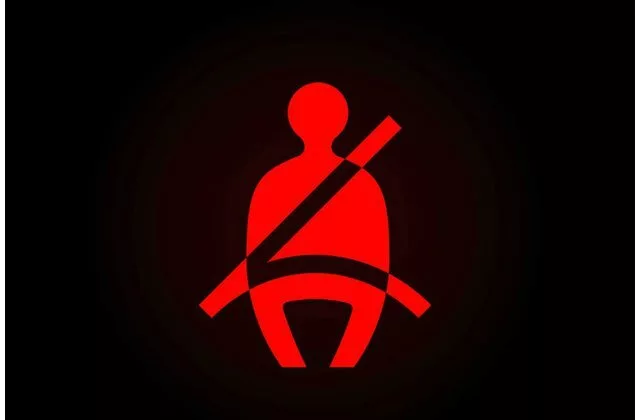
Vehicle Security Indicator
- Confirms the activation of the vehicle’s anti-theft system.
- Flashes when there is a potential security breach or malfunction.
- Constant illumination indicates the system is armed and active.
- A non-responsive indicator may suggest key fob issues.
- Check that all doors, trunk, and hood are securely closed.
- Replace the key fob battery if the indicator flickers or is weak.
- Consult the owner’s manual for resetting the security system.
- Inconsistent behavior of the light warrants professional advice.
- Do not ignore security system warnings; they protect against theft.
- Regular checks ensure the security system is functioning correctly.
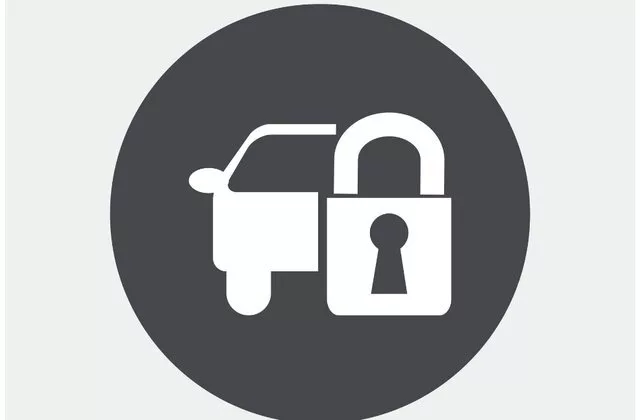
Electronic Stability Control (ESC) System
- Enhances vehicle stability by detecting and reducing skidding.
- Automatically activates when it detects loss of steering control.
- The constant light could indicate a malfunction or system deactivation.
- Turning off ESC is not recommended in normal driving conditions.
- Manual deactivation might be useful in snow or off-road situations.
- Reactivation is crucial for regaining stability control features.
- Regular system checks should be part of vehicle maintenance.
- If ESC warning illuminates without reason, a sensor may be faulty.
- Professional assessment is crucial if ESC light remains on.
- ESC significantly improves vehicle safety, particularly in poor driving conditions.
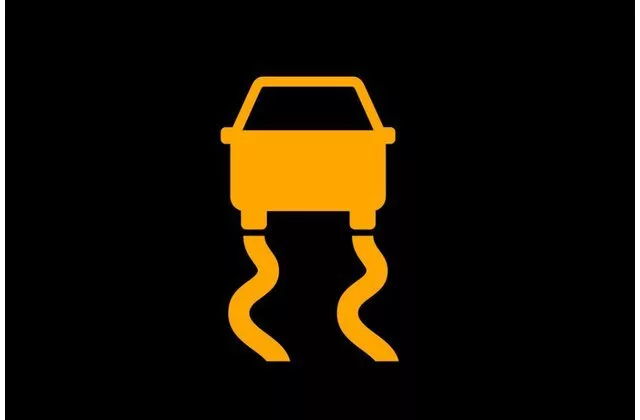
Engine Overheating
- Warns of abnormally high engine temperatures.
- Urges the driver to stop the vehicle and turn off the engine to cool down.
- Prolonged driving with an overheating engine can cause severe damage.
- Check coolant levels once the engine is cool; refill if necessary.
- Overheating can be due to a coolant leak, faulty thermostat, or a broken water pump.
- Radiator blockage or failure can also cause the engine to overheat.
- Towing to a mechanic is advisable if overheating persists after adding coolant.
- Periodic radiator and coolant system checks can prevent overheating.
- Consider using a coolant with a higher boiling point in hotter climates.
- Never remove the radiator cap while the engine is hot to prevent burns.
Tire Pressure Warning
- Indicates that one or more tires are significantly under-inflated or over-inflated.
- Proper tire pressure is crucial for safety, fuel efficiency, and tire lifespan.
- Use a reliable tire pressure gauge to check each tire against recommended PSI.
- Weather changes can affect tire pressure; more frequent checks may be necessary.
- Some systems can detect a flat tire, signaling an immediate need for replacement or repair.
- Inconsistent tire pressures can lead to uneven tire wear or vehicle handling issues.
- Over-inflation leads to a harsher ride and increased wear in the tire’s center.
- Under-inflation can cause tire overheating and increase the risk of tire failure.
- Tires should be cold when checking pressure for accurate readings.
- Tire pressure should be checked monthly and before long trips.
Oil Pressure Warning
- Indicates low oil pressure, critical for proper engine lubrication.
- Continuing to drive with this light on can lead to engine damage.
- Check oil level first; if low, top up to the marked level on the dipstick.
- If topping up doesn’t extinguish the light, a deeper issue may be present.
- Possible causes include oil pump failure or leaks in the oil system.
- Regular oil changes prevent sludge build-up that can clog oil passages.
- Use the correct oil type as specified in the vehicle’s owner’s manual.
- A flickering oil light at idle could indicate a failing oil pressure sensor.
- Immediate professional inspection is recommended if oil light stays on.
- Regular maintenance can help prevent oil pressure issues.
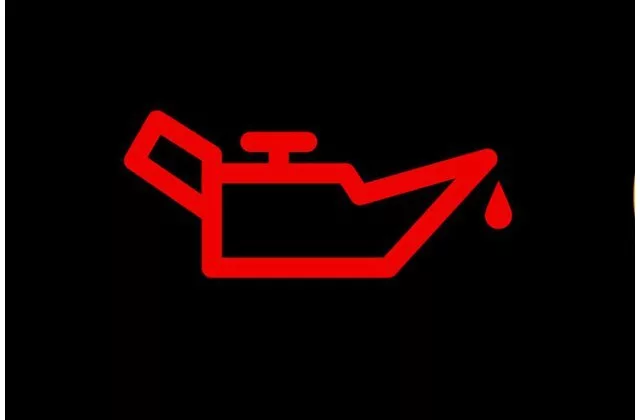
Engine Start/Stop Warning
- Indicates issues with the auto start/stop system designed to save fuel.
- System may not function if the battery is low or at the end of its lifespan.
- Malfunctions can arise from sensor errors or a failing starter motor.
- Some vehicles disable the feature when the engine or cabin is not at the optimal temperature.
- Frequent short trips without adequate charging time can trigger this warning.
- Check the battery and charging system if the start/stop system fails to engage.
- If the warning appears during normal operation, a diagnostic scan tool may identify the issue.
- System updates from the manufacturer may resolve software glitches.
- Deactivating the system, if possible, can temporarily bypass the issue.
- Consistent problems with the feature should be addressed by a dealership or auto specialist.

Front Collision Warning
- Alerts you when a potential frontal collision is detected.
- If it activates unexpectedly, ensure the front sensors are clean.
- A malfunctioning sensor or system error may trigger the warning.
- Always maintain a safe following distance regardless of warnings.
- This system is supplementary; do not solely rely on it to prevent collisions.
- If the light stays on, the system may require recalibration or repair.
- False warnings can be caused by adverse weather conditions or sensor obstruction.
- Regularly clean the front of your vehicle to ensure sensor clarity.
- Consult with a technician if the system frequently gives false alarms.
- Keep the system updated with any software fixes provided by the manufacturer.
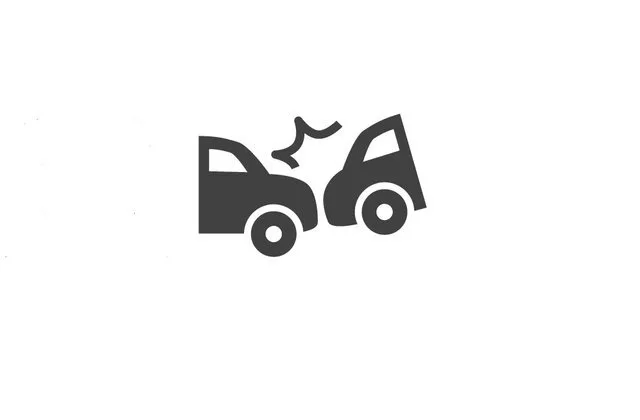
Traction Control System
- Helps maintain traction by controlling wheel spin.
- Light comes on when the system is activated or if there is a fault.
- Can be triggered by slippery conditions or aggressive driving.
- If the light remains on, the system may need professional servicing.
- Driving with a malfunctioning system can affect vehicle handling.
- Check for possible triggers like worn tires or incorrect tire sizes.
- Do not attempt to disable the system without a professional assessment.
- Ensure your tires have adequate tread depth for the system to work effectively.
- If traction control engages frequently, consider driving conditions and adapt accordingly.
- In some cases, the issue may be resolved by restarting the vehicle.
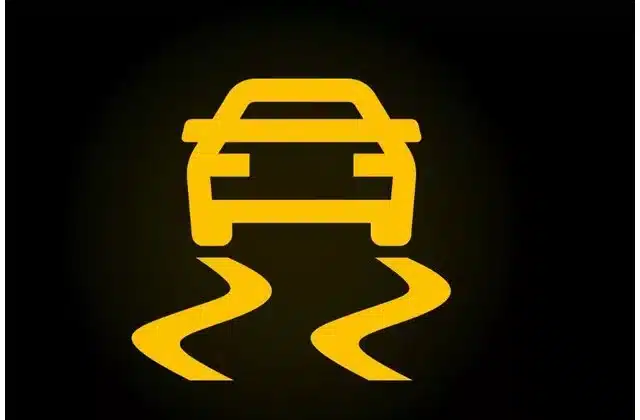
Brake System Warning
- Urgent warning that requires immediate attention.
- Could indicate low brake fluid, worn brake pads, or system malfunction.
- Ensure the handbrake is fully released if the light comes on while driving.
- Do not continue driving if the vehicle’s braking performance is reduced.
- Check brake fluid levels and top up if necessary.
- If topping up fluid doesn’t extinguish the light, there may be a leak.
- Worn brake pads can sometimes trigger the warning; have them inspected.
- Brake system faults may also relate to anti-lock braking system issues.
- Schedule a brake system check-up with a mechanic as soon as possible.
- Remember that the braking system is vital for your safety on the road.
Low Fuel Indicator
- Reminder to refuel the vehicle soon.
- Driving on extremely low fuel can risk running out of gas and damaging the fuel pump.
- Consistently low fuel levels can lead to sediment affecting the fuel filter and injectors.
- Keep the tank at least a quarter full to avoid fuel pump overheating.
- Plan fuel stops on long journeys to prevent getting stranded.
- Low fuel can sometimes trigger inaccurate readings on fuel gauges.
- Running out of fuel in certain vehicles can require a system reset.
- Fuel efficiency can decrease when consistently running on low fuel.
- Be aware of fuel station locations on unfamiliar routes.
- Use trip computers, if available, to estimate remaining driving range.
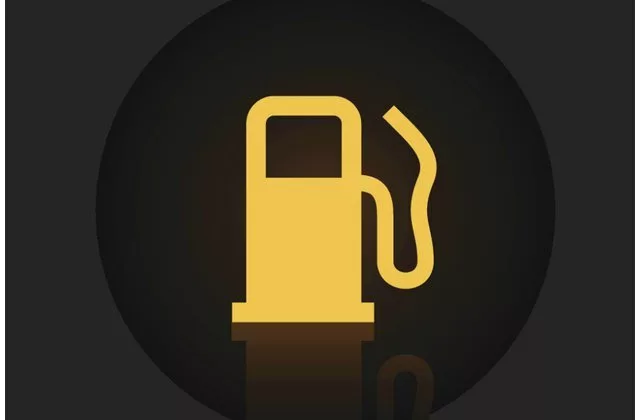
Low Engine Oil Level and Pressure Warnings
- Two critical indicators for engine health: oil level and oil pressure.
- Low oil level can cause insufficient lubrication, leading to engine damage.
- Low oil pressure can prevent proper oil circulation, also risking damage.
- Stop the vehicle and check oil levels if either warning appears.
- Use the correct type and grade of oil specified for your vehicle.
- Regular oil checks and changes are vital for engine maintenance.
- Leaks or a faulty oil pump can cause low pressure and need immediate attention.
- A lit oil warning light while driving warrants pulling over safely and investigating.
- If oil levels and pressure are normal but warnings persist, sensor issues may be the cause.
- Have the vehicle inspected by a professional to avoid risking severe engine damage.
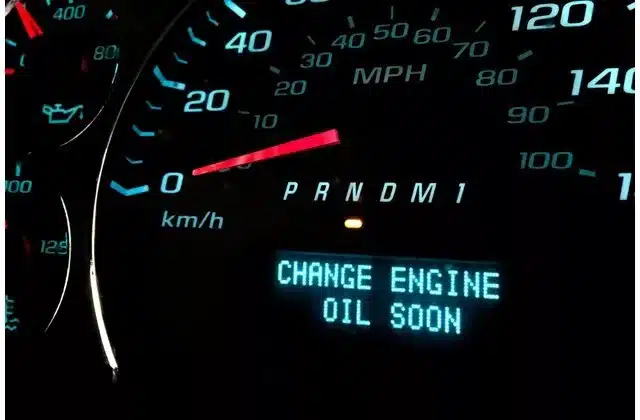
Windshield Washer Fluid Reminder
- Indicator for low windshield washer fluid level.
- Top up the fluid to ensure proper cleaning and visibility.
- Use the appropriate windshield washer fluid to prevent freezing or damage.
- Regularly check the fluid level, especially in poor weather conditions.
- Insufficient fluid can impede your ability to clean the windshield while driving.
- In some regions, driving with an empty windshield washer reservoir is illegal.
- A malfunctioning sensor may cause the light to stay on after refilling.
- Do not use water as a substitute in freezing temperatures.
- Ensure the washer nozzles are clean and unobstructed.
- Keep an extra bottle of windshield washer fluid in your vehicle for convenience.
Parking Brake Indicator
- Indicates that the parking brake is engaged.
- The light should turn off once the parking brake is fully released.
- If the light stays on, it may indicate a malfunction within the braking system.
- Check the parking brake lever or pedal to ensure it is fully disengaged.
- Driving with the parking brake on can cause brake overheating and wear.
- Have the parking brake system inspected if the light does not extinguish.
- Regular use of the parking brake helps maintain its proper function.
- Some vehicles automatically engage the parking brake when parked.
- If your vehicle has an electric parking brake, a different procedure may be needed to release it.
- Consult the vehicle’s manual for specific instructions on operating your parking brake.
Powertrain Fault
- A cog with an exclamation mark highlights an issue within the powertrain.
- Can affect the engine, transmission, or related systems.
- Reduced performance or increased emissions may occur.
- Avoid harsh driving and have the vehicle checked promptly.
- The powertrain is essential for the car’s overall performance and efficiency.
- Sometimes the light may reset after turning the vehicle off and on.
- A persistent light often requires diagnostic equipment to pinpoint the issue.
- Ignoring a powertrain fault can lead to more serious and costly repairs.
- Maintain regular service intervals to help prevent powertrain problems.
- Use quality fuels and oils to keep the powertrain functioning optimally.
Automatic Headlight Leveling System Malfunction
- Signals a fault with the system that adjusts the headlights automatically.
- Ensures optimal headlight coverage and reduces glare to oncoming traffic.
- If malfunctioning, headlight beams might aim too high or low.
- Malfunctions can result from sensor or actuator issues.
- Manual headlight adjustments may be necessary until the system is repaired.
- Regular checks can prevent malfunctions, especially before night driving.
- Cleaning sensors and checking connections can sometimes resolve the issue.
- Professional service is recommended for electrical or mechanical faults.
- Proper headlight alignment is important for safety and is legally required in some regions.
- Maintain awareness of oncoming traffic and adjust driving if headlight levels are incorrect.

Engine Emission Malfunction (Check Engine Light)
- A lit engine icon indicates possible emission system issues.
- Can range from simple fixes like tightening the gas cap to complex engine repairs.
- A flashing light suggests an urgent issue that needs immediate attention.
- Driving with the check engine light on can sometimes lead to further damage.
- Vehicle diagnostics with an OBD-II scanner can identify the specific error codes.
- Addressing emission issues promptly can prevent impacts on fuel efficiency.
- Emission problems can cause the vehicle to fail mandatory inspections.
- Regular vehicle maintenance helps minimize the risk of emission system malfunctions.
- Some check engine lights result from temporary conditions and might reset after a few drives.
- If the light remains on, scheduling a service visit is recommended to ensure proper vehicle function.
Electric Parking Brake
- Signifies the electric parking brake is applied.
- Should disengage automatically when you start driving; if not, do it manually.
- Persistent illumination suggests a malfunction or incomplete disengagement.
- Avoid driving until the issue is resolved to prevent brake system damage.
- Consult your vehicle’s manual for proper operation and release procedures.
- If disengagement issues persist, check for error messages or warnings.
- Regular use can help maintain the electric parking brake’s functionality.
- Do not force the vehicle to move if the brake won’t release; seek professional help.
- A professional diagnostic is recommended to identify any electronic issues.
- Maintenance checks should include the electric parking brake for reliable operation.
Tire Pressure Monitoring System (TPMS) Malfunction
- Alerts you to an issue with the system monitoring tire pressure.
- May indicate a sensor failure or communication issue.
- Ensure all tires are properly inflated as a first measure.
- If the light remains on after inflation, a sensor may need to be replaced.
- TPMS is critical for identifying under-inflated tires that can lead to blowouts.
- Sensor batteries can fail over time and may need replacement.
- TPMS requires recalibration after tire rotation, replacement, or pressure adjustments.
- Check your vehicle’s manual for TPMS reset procedures.
- Cold weather can trigger false TPMS warnings due to pressure drops.
- Consistent TPMS issues should be inspected by a tire professional or mechanic.
Adaptive Cruise Control Indicator
- Indicates adaptive cruise control is active and operational.
- If the system fails to engage, ensure the front radar and cameras are unobstructed.
- Malfunctions may occur due to sensor misalignment or failure.
- Do not rely solely on adaptive cruise control; always be ready to take over manually.
- This system adjusts vehicle speed based on traffic conditions for convenience and safety.
- Keep a safe distance even when adaptive cruise control is engaged.
- If the indicator flashes or won’t activate, consult the vehicle’s manual or a professional.
- System updates or calibrations may be needed for optimal function.
- Regular cleaning of sensors and cameras is important for reliability.
- A diagnostic check can resolve persistent adaptive cruise control issues.
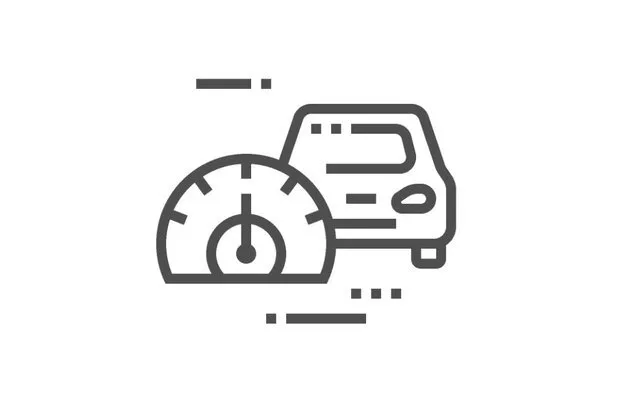
Lane Departure Warning
- Notifies you if the vehicle begins to drift out of the detected lane.
- If it activates without lane departure, check for windshield obstructions.
- System relies on clear lane markings; poor road conditions can limit functionality.
- If the light stays on, the system might need recalibration or repair.
- Always use turn signals to deactivate the warning when changing lanes intentionally.
- Do not depend entirely on the system; always check mirrors and surroundings.
- Clean camera lenses and sensors regularly for accurate lane detection.
- Stay attentive to the road; the system is a supplement, not a replacement for vigilance.
- Some systems allow you to adjust the sensitivity or turn off the feature.
- In case of frequent false alarms, have the system inspected at a dealership.

Airbag Warning
- Signals a problem with the vehicle’s airbag system.
- An illuminated airbag warning light can mean airbags are not operational.
- Do not ignore this light; airbags are critical in protecting occupants during collisions.
- Causes can include sensor issues, electrical problems, or deployment malfunctions.
- Check for recalled airbag components via manufacturer updates.
- A professional should inspect the system to ensure all components are functioning.
- Avoid tampering with airbag systems; improper handling can trigger deployment.
- Dealerships can perform diagnostics and necessary repairs.
- Periodic system checks are advisable to maintain airbag readiness.
- Ensure that all vehicle recalls related to airbags are addressed promptly.
ABS (Anti-lock Braking System) Warning
- Indicates a malfunction in the anti-lock braking system.
- ABS prevents wheels from locking during heavy braking.
- Normal braking is typically still functional, but ABS may not engage during an emergency.
- Causes can range from blown fuses to sensor failures.
- Check brake fluid levels as low levels can trigger the ABS light.
- If the ABS warning comes on during driving, proceed cautiously and avoid sudden stops.
- Do not attempt to inspect or repair ABS components yourself.
- ABS is particularly helpful in slippery conditions for maintaining control.
- A professional diagnosis is needed to identify and fix ABS issues.
- Ensure your brakes are inspected regularly, including the ABS components.
Drowsiness Monitoring System:
- Alerts when signs of driver fatigue or drowsiness are detected.
- Take the warning seriously and take a break if needed.
- False warnings can be caused by changes in driving patterns or poor sensor performance.
- Ensure the system’s sensors are clean and unobstructed.
- Some systems learn driver behaviors over time; unusual driving can trigger alerts.
- Adjust the system’s sensitivity if available in your vehicle settings.
- Regular rest stops during long trips can prevent drowsiness.
- Do not rely on the system as a substitute for adequate rest.
- If the system frequently gives warnings, it may require recalibration.
- Consult your vehicle’s manual for more information on how the system operates and how to adjust settings.
For each of these indicators, it’s crucial to understand the recommended actions to take. While some issues can be resolved by the driver, others necessitate professional assessment to ensure your vehicle remains safe and operational.
Why Limitless Tire for Dashboard Light Diagnosis
State-of-the-Art Diagnostic Equipment
Limitless Tire utilizes the latest in diagnostic technology to interpret your vehicle’s dashboard signals accurately. Our advanced equipment allows us to communicate with your vehicle’s onboard computer system, pinpointing the exact cause of alerts and enabling a swift resolution to any issue.
Experienced Technicians
Our team of highly skilled technicians has extensive experience in vehicle diagnostics, including interpreting dashboard light indicators. Whether it’s a check engine light, ABS warning, or tire pressure alert, our experts have the knowledge to diagnose and address the issue efficiently.
Full Spectrum of Diagnostic Services
From minor alerts to critical warnings, Limitless Tire offers a full range of diagnostic services to cover any dashboard indicator light. We provide detailed assessments and tailored solutions for issues related to engine performance, braking systems, tire pressure, and more, ensuring your vehicle’s optimal performance and safety.
Transparent Communication and Service
At Limitless Tire, we believe in clear, transparent communication with our customers. Following a thorough diagnostic check, we explain the cause of the dashboard alert, discuss potential solutions, and provide a clear estimate of the work required, ensuring you’re fully informed and comfortable with the process.
The Importance of Dashboard Light Diagnosis
Preventing Major Repairs
Addressing dashboard alerts promptly can prevent minor issues from becoming major repairs. Our diagnostic service is designed to catch and resolve problems early, saving you time and money in the long run.
Maintaining Vehicle Safety
Many dashboard lights, such as those for the braking system or airbags, directly relate to vehicle safety. A comprehensive diagnosis ensures these critical systems are functioning correctly, keeping you and your passengers safe.
Enhancing Vehicle Performance
Dashboard indicators can also signal issues affecting your vehicle’s performance and efficiency. Through precise diagnostics and expert service, we can restore your vehicle’s optimal performance, ensuring a smooth and efficient driving experience.
Customer Testimonials
Our commitment to excellence in dashboard light diagnosis is echoed in the experiences of our customers:
"When my check engine light came on, I went straight to Limitless Tire. They diagnosed the issue quickly and explained everything clearly. Their service was outstanding, and they got me back on the road safely." - Aryan Kapoor
"Limitless Tire’s attention to detail and customer service is unmatched. They took the time to thoroughly diagnose my vehicle’s dashboard alert and fixed the problem efficiently. Highly recommend their services." - Muneeb Khalid
Conclusion
When your vehicle’s dashboard lights alert you to a potential issue, don’t wait—turn to Limitless Tire for a comprehensive diagnosis and expert service. Our state-of-the-art diagnostic equipment, experienced technicians, and commitment to transparent communication ensure that we can swiftly decode your vehicle’s signals and provide the necessary solutions, keeping your vehicle running smoothly and safely.
Facing a dashboard light alert? Contact Limitless Tire today to schedule your comprehensive vehicle dashboard light diagnosis and enjoy peace of mind on the road.



